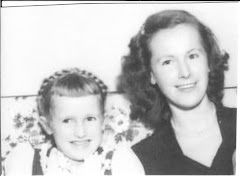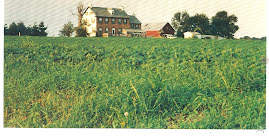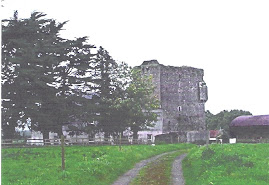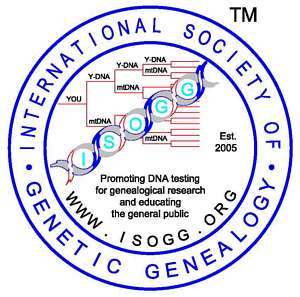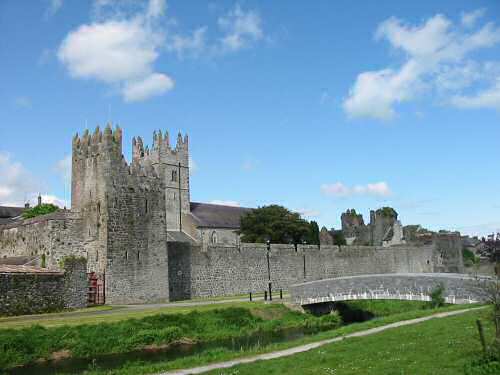Thursday, January 29, 2009
Mom's Cousin
An amazing tale~!
My Mom, Betty Faunt, and my Dad retired to a seaside community in NJ in 1985.They were happy years for them and surely would have fulfilled the dream of both of their immigrant Irish grandparents.
Thanksgiving was when we found our Faunt cousin and shared tales. Cousin, in turn shared with an Auntie her mother's sister. Imagine our incredible shock to find that her Auntie and our Mother were friends and Church group members in this small seaside town.
They traded books back and forth, both of them avid readers. Sister and I knew of this lady who now we know was Mom's own 2nd cousin, all of us sharing the great-grandparents who came from Ireland to Beverly NJ in 1869.
Mom's cousin went to her funeral in 2003.She left with a Mass Card as good Catholics do and the Mass Card gave Mom's full name..Elizabeth Faunt Carrow. Mom's cousin and my new cousin's Auntie describes herself as stunned but did not know what to do with the information as her "Friend Betty" was now deceased.She herself did not know who to ask.
When our new cousin shared all of our new information with her Aunt she found out about their friendship.What a small world but how much they missed!
I called my new "Cousin-Aunt" this week and what a great talk we had. She and I both had always wondered why we did not know more cousins. She said she asked her Mother before about "Irish Customs" and dances and maybe relatives in the old country. She said her Mother told her "We are American not Irish".
She was so excited about the new family information that her son gave her a computer for Christmas and she is anxiously waiting a computer class scheduled for March for a "how-to".
I sent her a huge letter complete with pictures yesterday. I can't wait to see her "online".
I am more than ever committed to meeting and knowing any and all cousins I can find. Fran told me that he has had a feeling recently that all of them gather together. We both feel that it is our heritage from Retta..some of our siblings have that capacity from time to time. He is right, I am sure.
Our Thanksgiving Gift - Two Families
I will tell you that Fran and I both had a healthy respect for and possibly a small genetic heritage of our Grandmother Retta's ability to know things others do not always know.The Irish call it 'the sight', or at least that is what it was called in our family as it related to Retta. What was told to me was not always in a flattering sense, some described Retta as a witch.What consistantly was told to us is that she foretold her funeral and said that the snow would be up to everyone 'backsides' ( not her term) on the day she would be buried. I was told by several people that a blizzard blew in on that day and the ground was frozen and interment was not possible for several weeks. Poor dear Retta.
Some of the ancedotes about Retta I believe were told to relieve my Grandpop of his great grief for her loss and also to help him carry his great burden of 4 small children. His sisters I know who raised him after he also was left Motherless at 4 were very protective of him.He was said to have seizures if he was stressed so everyone went out of their way to spare him any emotional discomfort. I knew him as a happy-go-lucky and loving grandfather.
Fran got this response from our cousin:
I was looking for information on the name Faunt and found your query. William Faunt was also my great great grandfather and Patrick's younger brother William was my great grandfather. I have some additional information. Our new cousins , when we spoke had a different experience in the early years of the 20th century. Our Patrick's younger brother did not lose his wife to death leaving his children motherless.They sadly lost children in infancy as did many other children but raised two children together as a couple.
Apparently not for them was my grandpop's tale of coming home from school to find possessions of the family 'at the curb' due to eviction and having to stand guard over those possessions until a new place to live was secured. Grandpop Ed Faunt had few if any family heirlooms.I have one picture of his brothers and him.
The 1910 census shows this William Faunt with wife and children and his younger brother Michael, youngest surviving child of our immigrant family.Michael is deceased by 1911 and his newspaper obit indicates his parents are deceased. From this we know that Ellen Lynch Font,( as she spelled it) who remarries in 1890 after her husband's early death, possibly the glue in the family is now gone.
Did the poverty and fractured living conditions of Patrick and his children drive a wedge between the brothers? Were they possibly never close? We have no information about this.
Grandpop went to work at an early age and married when barely 18. Possibly his family lied about his age as he stated for most of his life that he was born in 1897. His birth certificate acquired when he was of Social Security pension age indicates that he is named "Edmond" not Edward and is born in 1898.
Edmond is a name found in the Fethard Tipperary family going back to 1730.Patrick's uncle and a maternal grandfather were so named. Did our Pat live life in a manner more reminiscent of the Old Country? His wife and his mother both worked as Greengrocers outside the home. He never owned a home and seemingly had endless residence changes as census records show.
Our new cousin tells us that her grandfather, William Faunt's son-in-law was affluent.He had an invention that lifted the family into another Social Class. In 1927 a home was built in Phildelphia costing $10,000 which was a great sum in those days. Was there more time and emotional energy for visiting family also?
Shortly after Retta's death in 1926 Grandpop Faunt placed all 3 of his young sons in an Orphanage and took my Mother, his baby with him to several states on his Depression Era search for employment.
Grandpop purchased his first home in 1953 or 1954 and by then his children all owned their own home and may have provided an example for him. He did however live in the same rented house for all the years he raised his children after they were reunited around 1931, again in Penns Grove. Grandpop Faunt worked as a Rigger foreman for DuPont until retired from there about 30 years later. His sons worked there after him
Patrick may have been deceased by then. but we know he is remarried in 1920 with two more young children, George and Helen. Fran has an oral tale of Pat working at DuPont as a guard in WWI and sleeping on straw in a barn. We do find Jesse, Ed and Pat in Penns Grove NJ in 1917 for the first time.
Seemingly the family had little contact during these years and most of us knew nothing of each other. Was the contrast too great between them? Did that drive a wedge between them or was the difference between the first and second child already there? William Faunt's children had contact with the younger daughters of the immigrant family, Jenny and Nellie in Burlington County.
Our great Thanksgiving gift, in addition to learning of our cousin is the added information we now have.We can begin to build on our family knowledge base by combining what this cousin know with what we know to form a clearer history of life in this country.
For the first time I have seen pictures of men in my Faunt family.
I am thankful for that also as well as my new Cousin.
Friday, January 23, 2009
Northwest European and I2a1
Speculation and at least one person's educated conclusion is that this group, not now dominated by Sardinians, was among the group that repopulated extreme Western Europe.
What does that mean? What is extreme Western Europe actually? The definition of that varies but some DNA population experts feel that is Western Scandinavia, Ireland, Scotland and the Germanic area which faces the UK.
DNA Tribes who has done my autosomal include Celtic speaking area of the Atlantic facade and the Northwest area of the Continent including the Germanic speaking areas of Scandinavia and lands and territories invaded by the Vikings. Lands that are linked by the North Sea and the Irish sea.
Our Faunt family as typified by Walter L'Enfant as early as 1290 in Ireland here:
John de Saunford, Archbishop of Dublin, on July 7, 1288, was appointed by the King's Council 'Keeper of Ireland until the king should otherwise decide ' : Cal., vol. iii, no. 559. William d'Oddingeseles and Walter l'Enfant were his deputies in 1290 in some operations against O'Melaghlin of Meath : ibid., p. 270.( from Ireland Under the Normans)
Irish records that I have pulled indicate to me that at least my one line back to 1730 married predominantly of the same "Cultural group" as themselves..Anglo-Normans.Cunningham, Slattery,Lynch,Hannon,Butler,Hickey.
Curiously, Joe Wearing a Fant cousin whose Grandmother descends from the Faunt family in Westmeath is very close to us ancestrally on this I21a haplogroupeven though on different lines.
Joe's Wearing ancestor (actually Waring or Berry) on his Y line side as well as his Faunt side share this hapoltype although a variant. Here is a link to a goup that Joe and Fran and James belong to:http://www.familytreedna.com/public/I2aHapGroup/default.aspx
The Clade is divided into smaller groups here:
I-M26-A.................30
I-M26-B.................7
I-M26-C.................9
Joe Wearing on his Waring/Berry ancestor is in I-M26C..almost as small as ours is.
There is a predictor that was used to place us there..
http://members.bex.net/jtcullen515/haplotest.htm
Here is a predictor by Ken Nordvedt on the estimation of age of this group:
_______________________________________________P37.2 West
P37.2
_______________M423_________________________________Dinaric
______________________________Isles
______M26____________________________________Sardinian
6,000 12,000 18,000 24,000 years
------------/------------/-------/------------------------------------------------------------
200 400 600 generations
Since we are M26 which apparently arose 7500 years ago I think that means we ( our men) did not actually live in Sardinia..
we shared an ancestor at that point..Joe's kinsman who later became Berry and our man who later became Fant were brothers or cousins..c 7500 and they at that point in time were founders of the Culture that settled extreme Western Europe
That is how I understand it..
and I am a non-scientist
Wednesday, January 21, 2009
Land Tenure and Griffiths
http://www.ancestry.com/ and then looking for the DNA home hopefully will get you there.
Joe descends from the Westmeath Faunt family.His ancestor emigrates to Canada and those who are left behind eventually find them selves in County Cork.
Sometimes they are even near Mitchelstown Cork which is RIGHT on the borderland between Limerick and Cork quite close to the ancestral home at Kilmallock and where my Faunts are found in earlier and later times.
" Kathleen had said in an email that she was under the impression that Catholics could not own land in Ireland. Land tenure in Ireland before the 20th century was quite complicated and very different from what we are familiar with in Canada and the US. There is a very helpful article on "land tenure" in The Oxford Companion to Irish History. The article (very much abbreviated) says that in early medieval Ireland, land tenure was determined by kinship. The Anglo-Norman invasion of the 12th C brought a new system based on lordship. Early modern land tenure, as in England, was based on the assumption that all land was owned absolutely by the king and that others held from him either directly or indirectly. Under English common law there were two types of tenure, freehold or leasehold. Freehold was in turn of two types, a fee simple which subsisted for ever, and a fee tail which was restricted to the immediate descendants of the original grantee. Leasehold was for a fixed period, usually years or named lives, over which a rent was paid. A third category of tenancy was "tenancy at will" which could be terminated by either party at any time. The three types of tenancy were a reflection of the social hierarchy. During the 18th century, for instance, the usual tenure for middlemen and the larger tenant farmers was leasehold. (Middlemen held large properties directly from landlords on long leases and sublet them to their own undertenants for shorter periods at higher rents - "rack rents".) Up to 1850 the parliamentary franchise was restricted to tenants holding leases for lives. (Before the Catholic Relief Act of 1793, only Protestant tenants had the vote.) The pattern of tenure change rapidly during the early 19th C. Leaseholds became shorter and the Great Famine bankrupted most middlemen, who were responsible for paying the poor rate on behalf of their own impoverished smallholders. By 1870, 80% of Ireland's 500,000 tenants held tenancies which were just a year in length. With the passage of the various Land Acts (1870-1923) the system of tenurial landholding was abolished and replaced by owner occupation.
There is a lot of interesting documentation on my immediate Faunt relations in the records of the Irish land Commission in 1903 all of which is on Mormon film no. 0592932. The Faunts of Youghal in co. Cork appear to have been "middlemen" - quite a messy story, which I want to write up some time "
This from Joe.
I, in the meantime, pulled these records and found that maybe two of the Fant/Faunt families in Tipperary may also have been "Middlemen".
Patrick Fant in Templemore North Riding at 167 Main Street leased to William Looby and at 168 lived in the property himself. This Pat Fant is an MD but unfortunately I do not think he is my ancestor. He IS however related to others in the line and definitely close kin to Rev. Patrick Fant who was an Archbishop in Templemore. That Rev. Fant was associated with a Fant family chalice, from the castle at Fantstown which is found in his church near Drumm.
My Irish researcher believes that this family which is found near Bansha/Galbally is one and the same with my family circa 1730.Galbally is very near to Mitchelstown.
William Fant does something similar with regard to sub-letting on the Cashel Road in Tipperary, near Fethard but possibly for another reason.He and his cousin( or uncle) also William were Nailers, a hereditary occupation that restricted where they worked and sometimes lived.This is due to Fethard being a walled Market town from Norman time which has laws and customs about who works and lives where.
These two William Fants, one of whom is my direct ancestor sometimes lived in Cashel and sometimes in Fethard but always on the road to Cashel.
Tuesday, January 20, 2009
More than Self..John Carrow, William Keys,Peter Rementer
In liberating strife,
Who more than self their country loved,
And mercy more than life.
Today as I watched the beginning of the Inaugural events on television I heard a gospel version of this song, America..
I was struck by the fact that I, a mostly Irish American, had ancestors that loved THIS country enough to stand up and be counted.They loved America possibly enough to think about laying down their life for it.
John Carrow of whose line I come from is a descendant of a man who served as a Constable in Accomac Virginia in 1667.We believe that he or his father were in Virginia in 1643 and quite likely fled Ireland for political and religious reasons.
His descendant, also John Carrow, lost his father in 1776 but in that same year mustered into the Queen Anne County Maryland Militia with a cousin Andrew Carrow.In 1782 he donated corn and rye in Duck Creek Delaware.
William Keys whose daughter Mary married the son of John Carrow enlisted in the Continental Army and served in the Delaware Regiment until very late in 1782.He was at or near Yorktown at the surrender surely as his unit served under Gen. Nathaniel Greene.They then marched to near Charleston SC where at Camp Ashley River they kept the British under surveilance with nightly skirmishes for 2 more years. Records show they(Delaware and Maryland regiments) were extremely poorly clothed and underfed.
Peter Rementer ( aka Regimenter) was of foreign birth.He may have been politically a German as he spoke the language but was believed to hail from near Alsace-Lorraine.He comes to America at least a decade before the Revolutionary War where he lived in Philadelphia in Southwark.He mustered into the Philadelphia Militia and served active duty Sept 1, 1781 in the 6th Regiment of Foot, Captain Warwick Coats Company. His papers are currently in review at the DAR.
Every generation it seems after this had it heroes in this family.Were these the first?Maybe not as William Keys served in the French and Indian War in 1758 and Henry Carrew served in Maryland Militia in 1678.
George Faunt first generation son of Patrick Faunt died in WWII in Italy defending this country.
Joe Swanson and William Faunt both from Beverly NJ served in WWI.
Louis George Carrow son of Grover Carrow and uncle of my father also died in WWII.
My father and all my Faunt uncles served heroically in the same conflict.
William F. Carrow, James Sweeney, John Swanson all served their country in the Civil War.
Today the 44th President of the United Sates said in his address " For us, they packed up their few worldly possessions and traveled across oceans in search of a new life."
For us they all came.
Monday, January 19, 2009
John Carrow the Patriot
" I am thrilled to bits to announce that the DAR has verified my Supplemental yesterday for John Carrow as a "New Patriot".It was something that was assumed would never happen as this family straddled the line between Maryland and Delaware for at least 100 years.John Carrow served in Queen Anne MD Militia in 1776 although he lived in Duck Creek DE for part of his young adult life.His father died in 1776 and in 1775 the family was not to be found in Delaware. John Carrow and his mother, in separate households are again in DE by 1782.Two things happen here: one is John's Patriot status and one is that the family indeed is the one that is in Queen Anne MD and Dorchester MD after they leave Accomac VA c. 1675.
Kathleen Carrow Ingram( proud of John Carrow) "
Griffiths, Occupation and the Famine
My Carrows , although thought to be Irish are in this country since 1643.Not famine surely although Irish "troubles" were evident in 1643 and throughout the centuries.
The Faunt family ( how we spelled it) and their early immigrating cousins the Fants of Virginia as well as Faunt/Fant/Fonts who went to other lands and countries have histories which tell another tale.
How do we know they are related? 8 men have tested their DNA and of the 7 men who have results back 5 of them match each other in a fairly small sublade which was first called"Sardinian I1b", the newer version is called I2a1 or " I-M26"..still matching lots of Mediterranean folks.
Two other men have paper trails to the same families although they do not match on the Y chromosome.
Another cousin had said this today regarding the concept of Famine Irish and Socio-Economic status:
There could very well have been different lines, but this is what I know about mine:
Richard Faunt (my 3xgr-grandfather) held various parcels of land in co. Westmeath near Mullingar - these are recorded in documents in the Registry of Deeds.
- Some of this land was assigned in a deed of Marriage Settlement between Richard's son Henry and Elinor Egan (my 2xgr-grandparents). There was also a bond of £1000 in case Elinor survived the term of the lease.
- Henry and Elinor were married in St. Mary's church in Dublin in 1816. It was Church of Ireland (i.e., episcopal).
- Elinor came from a prominent Catholic family in co. Galway. Her father was a doctor in Dublin and a member of the Royal Society of London. A close relation was Boethius Egan, the Catholic Archbishop of Tuam. Another relation, John Egan of Tuam, died in 1846 leaving an estate of £18,608 (worth over £1,000,000 today).
- The children of Henry and Elinor were baptized in the Catholic church in Mullingar, but in Canada Henry and his family are listed in the various censuses as Church of England and one of their children - Ellen (my gr-grandmother) was married in the Anglican church in London, Ontario.
- both Henry Faunt and his older brother Thomas were officers in the British Army. Thomas held land in co. Cork and left an estate of £6894 (worth about £400,000 today).
from Kath:
I had thought Catholics could not own property during this time so I have not even checked for records but will do so..
My men, in addition to the British Army history were Nailers which was Trade that allowed them to be part of the town of Fethard itself:
"Should the walker turn left at the dance hall rather than right over the bridge leading into the town he would find himself in Kerry St. and on the road to Clonmel. In the days when nails were made by hand in a forge rather than by machinery in a factory, Kerry St. was the place where the Fethard nailers lived and worked. Tradition has it that their workshops were situated on the left side of the street as one goes toward Clonmel. Specimens of their long, sharp produce can still be picked up about the town."John McDermott felt that Patrick Fant who was found in Griffith's Valuation in Knockkrour Kilbeheny Limerick was likely father to William from Fethard Tipperary..
four men are nearby to where I find my folks in 1838-50 one is Patrick one is one of our William others are Robert and Michael
Here :
Patrick Fant: Lessor, Earl of Kingston, Mitchellstown & Kilmallock Limerick
Robert Fant: Lessor Thomas Guiry,Groom,Kilmallock Kilmeedy Parish Lim.
Michael Fant: Lessor Wm.Grogan Kilmallock & Mallow,Ratggoggan Cork
William Fant:Lessor John Gleeson Cashel & Tipperary Fethard Tipperary ( on Cashel Road )
None of these men owned the land..Alfred Fant in Galway did not own his land...although he may own the land in Westmeath..if that is him
It is very interesting to me to look at this now as we know so much more..
My William's brother Patrick goes to Kilmallock in later years..
If Patrick Fant who is in Kilmallock in 1852 but gone in 1855( likely he dies) was father to my older William then that could be a reason..
he surely is NOT the oldest son because of the naming patterns..
William who is on Cashel Road in Fethard was there because of his occupation as Nailer..as likely was the "other" William who is surely a cousin..
their cottages may have been hereditary also..the occupation was..
Sunday, January 18, 2009
DNA Genealogy
These families: Carrow,Faunt/Fant/Font,Dugan/Duggan,Rementer,Keys.
I also help with other's lines at Family Tree DNA like the Lower Delmarva surname group which is inclusive of many surnames and both mtDNA and Y DNA.
Check them all out at Family Tree DNA :
http://www.familytreedna.com/
Cousins Abroad
Just wanted to share with you that my Sister Carol, also a Faunt, said she was so fascinated with Joe's perspective on our Revolutionary War ancestor..she said what we consider good is really relative for sure.
Our conversation pertained to my happy post to surely everyone in the world regarding our ancestor John Carrow's acceptance into the DAR Patriot Index as a "new Patriot". As an American I thought this was a great feat but it sure is relative.
Before I started my genealogy hobby when I retired in late 2002 I was sure that the majority of my ancestors were fairly recent "Potato Famine" immigrants. Many were of course but my Faunt family it would seem had a much greater depth to it. My loving Cousin Fran was quite sure I had made a big mistake when I told him that our William Faunt and brother Patrick were in the British Army. He felt they were more "Whiteboys" material or pre-IRA.
We did not know of course that the record would lead us to our roots in Fethard Tipperary nearabouts where our family lived since the 13th century.What we DID think we knew, that they were Norman French in ancestry seems accurate.
Sister Carol's point that we have Cousins "abroad" who might differ with what we think is a cool thing."Abroad" could also be a relative term..what do you think?






